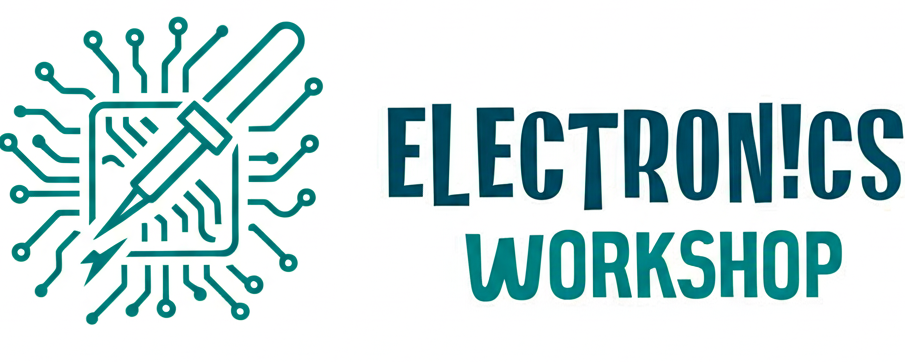Differences Between Inductor and Resistor
In the world of electronics, inductors and resistors are both fundamental passive components used in almost every circuit. Despite both being passive and two-terminal devices, they behave very differently and serve unique purposes in circuits. Understanding the differences between an inductor and a resistor is crucial for designing efficient and functional electronic systems.
This article explores the key differences between inductors and resistors in terms of function, construction, behavior in AC/DC circuits, energy interaction, equations, units, applications, and more.

1. Definition and Basic Function
Resistor:
A resistor is a passive electrical component that resists the flow of electric current. It works by converting electrical energy into heat. This property of resistance is constant and does not vary with frequency or current changes under normal conditions.
Function: Limits or controls the flow of electric current and drops voltage across its terminals.
Inductor:
An inductor is a passive electrical component that stores energy in a magnetic field when current flows through it. It opposes changes in current due to its inductance property.
Function: Opposes changes in current flow and temporarily stores energy in the form of a magnetic field.
2. Symbol and Unit
| Parameter | Resistor | Inductor |
| Circuit Symbol | ||
| Unit | Ohm (Ω) | Henry (H) |
| Quantity Measured | Resistance (R) | Inductance (L) |
3. Governing Law or Equation
•Ohm’s Law for Resistors: V=I×RV = I \times RV=I×R Voltage across a resistor is directly proportional to the current.
•Inductor Voltage-Current Relationship: V=LdIdtV = L \frac{dI}{dt}V=LdtdI Voltage across an inductor is proportional to the rate of change of current.
This means that if the current changes quickly, the inductor will generate a higher opposing voltage.
4. Energy Behavior
Resistor:
•Dissipates energy in the form of heat.
•No storage of energy.
Inductor:
•Stores energy temporarily in its magnetic field.
•Energy is released when current decreases.
5. Construction and Material
Resistor:
Constructed using materials that have high resistance such as carbon, metal films, or wire wound around an insulating core.
Inductor:
Made by winding a coil of conductive wire (typically copper) around a magnetic core (like ferrite or iron) or an air core.
6. Behavior in DC Circuits
Resistor in DC:
•Maintains constant resistance.
•Voltage drop is steady, and current obeys Ohm’s law.
Inductor in DC:
•Initially opposes the flow of current when DC is first applied due to self-induced EMF.
•After steady-state is reached, it acts like a short circuit (zero resistance to DC).
7. Behavior in AC Circuits
Resistor in AC:
•Offers the same resistance regardless of the frequency.
•Current and voltage are in phase.
Inductor in AC:
•Opposes high-frequency signals more than low-frequency ones due to inductive reactance.
•Current lags behind voltage by 90 degrees.
•Inductive reactance: XL=2πfLX_L = 2\pi f LXL=2πfL
8. Effect of Frequency
| Frequency Change | Resistor | Inductor |
| Increase | No effect | Inductive reactance increases |
| Decrease | No effect | Inductive reactance decreases |
This makes inductors useful in filters, chokes, and tuning circuits.
9. Power Consumption
•Resistor: Consumes power and dissipates it as heat (real power). P=I2RP = I^2 RP=I2R
•Inductor: Does not consume power ideally; it stores and releases energy (reactive power). Losses only occur due to winding resistance (non-ideal case).
10. Applications
Common Resistor Applications:
•Current limiting in LED circuits
•Voltage division
•Pull-up/pull-down resistors in logic circuits
•Biasing of transistors
•Heat generation (in electric heaters)
Common Inductor Applications:
•Filters in power supplies (LC, LRC filters)
•Transformers (when coupled with other inductors)
•Energy storage in switch-mode power supplies
•RF circuits (antenna tuning)
•Inductive sensors
11. Ideal vs Real Behavior
Resistors:
•Ideal resistor: Only resistance, no inductance or capacitance.
•Real resistor: May have small parasitic inductance and capacitance at high frequencies.
Inductors:
•Ideal inductor: Pure inductance, no resistance or capacitance.
•Real inductor: Has internal resistance (due to wire) and parasitic capacitance between turns.
12. Size and Cost
•Resistors are generally small, low-cost, and available in many power ratings and tolerances.
•Inductors are often larger and more expensive, especially those with higher inductance or current handling capacity.
13. Thermal Characteristics
•Resistors can get very hot depending on power dissipation and need proper derating.
•Inductors also generate heat due to winding resistance, but thermal behavior is also influenced by core saturation and hysteresis losses.
14. Failure Modes
•Resistor failure: Open circuit, drifting resistance, burn out.
•Inductor failure: Open winding, shorted turns, core saturation, or overheating.
15. Selection Parameters
When choosing between or selecting these components:
For Resistors:
•Resistance (Ω)
•Power rating (W)
•Tolerance (%)
•Temperature coefficient
For Inductors:
•Inductance (H or mH)
•Current rating (A)
•Saturation current
•DCR (DC resistance)
•SRF (Self-Resonant Frequency)
16. Summary Table: Inductor vs Resistor
| Feature | Resistor | Inductor |
| Symbol | R | L |
| Unit | Ohm (Ω) | Henry (H) |
| Governing Law | Ohm’s Law: V=IRV = IRV=IR | V=LdIdtV = L \frac{dI}{dt}V=LdtdI |
| Energy | Dissipates energy as heat | Stores energy in magnetic field |
| AC Behavior | Constant resistance | Reactance increases with frequency |
| Phase Relationship | Voltage and current in phase | Current lags voltage by 90° |
| DC Behavior | Constant resistance | Acts like a short after steady state |
| Frequency Dependence | No | Yes |
| Applications | Voltage control, current limit | Filtering, energy storage |
| Size and Cost | Small, low-cost | Larger, more expensive |
Conclusion
While both resistors and inductors are indispensable components in electronics, they serve fundamentally different roles. Resistors provide constant resistance to current flow and are used mainly for voltage control and current limitation. Inductors, on the other hand, store energy in magnetic fields, oppose rapid current changes, and are more prominent in AC circuits and energy storage applications.
Understanding the distinct electrical behaviors and applications of each helps engineers and hobbyists design better circuits that are reliable, efficient, and tailored for specific performance needs.






